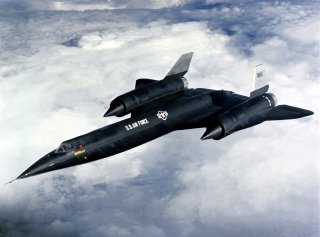No Blackbird: This CIA Spy Plane Gave Birth to the SR-71
The A-12 flew a hair higher and faster than the SR-71, but the latter was packed with a more robust ECM suite and other advanced avionics features.
Here’s What You Need To Remember: The A-12 finally entered service in 1967. Eighteen planes were built, of which only thirteen were mass-produced A-12’s; the others were pre-production units or drone carrier variants. By the early 1960s, it became clear to Washington that the latest Soviet air defense systems can credibly threaten the U-2 spy plane. The starkest illustration yet came in 1960, when a Soviet S-75 Dvina battery shot down a US U-2 aircraft. Another U-2 was successfully knocked down several years later during the Cuban Missile Crisis. With the CIA’s prior failure to introduce stealth features to the U-2 via Project Rainbow, it was deemed that a new stealth reconnaissance platform was necessary. Lockheed got to work on a radically new aircraft for high altitude, high-speed reconnaissance missions in illegal territory, introducing a slew of forward-looking design features unique to the A-12 project. The CIA’s new spy plane was to be built from radar-absorbent materials, fly at supersonic speeds, and feature a cutting-edge electronic countermeasures (ECM) suite. The new plane was constructed from titanium, which the CIA obtained from Soviet suppliers through the use of shell companies. Processing and handling titanium is notoriously difficult, which is partly why the US Navy opted not to follow its Soviet counterpart down the path of titanium-constructed submarines. Still, the A-12’s engineers managed to bend the frame into proper shape through piecemeal construction techniques.
Following numerous prototypes, several lost models, and crew deaths during testing, the A-12 finally entered service in 1967. Eighteen planes were built, of which only thirteen were mass-produced A-12’s; the others were pre-production units or drone carrier variants. As part of Operation Black Shield, A-12’s flew dozens of reconnaissance sorties in the latter stages of the Vietnam War. These missions revealed the positions of North Vietnamese missile systems and other enemy assets, although the degree to which the A-12 succeeded in evading Soviet radars remains disputed. The A-12 went head-to-head with Lockheed’s SR-71 “Blackbird,” a secret derivative project from the A-12’s design, in a 1967 competitive reconnaissance fly-off codenamed NICE GIRL. The A-12 flew a hair higher and faster than the Blackbird, but the latter was packed with a more robust ECM suite and other advanced avionics features. There was no clear winner—as it were, the comparison was about to be rendered moot by external developments. The A-12 project turned out to be dead on arrival, in large part for reasons that had nothing to do with the aircraft’s performance. In the years following the 1960 downed U-2 fiasco, the Kennedy administration moved to cease all illegal aerial reconnaissance missions over Soviet territory, undermining the A-12’s core purpose. Meanwhile, advancements in spy satellite technologies allowed the CIA to reproduce much of the information that would have been procured by the A-12 without the political risk of sending U.S. pilots on spying missions over hostile territory.
The remaining A-12s were stored and subsequently put on display across the country, with locations including the San Diego Air and Space Museum, the Museum of Flight in Washington, and CIA headquarters at Langley, Virginia. Mark Episkopos is the new national security reporter for the National Interest. This article is being reprinted due to reader interest.
Image: Wikipedia.

